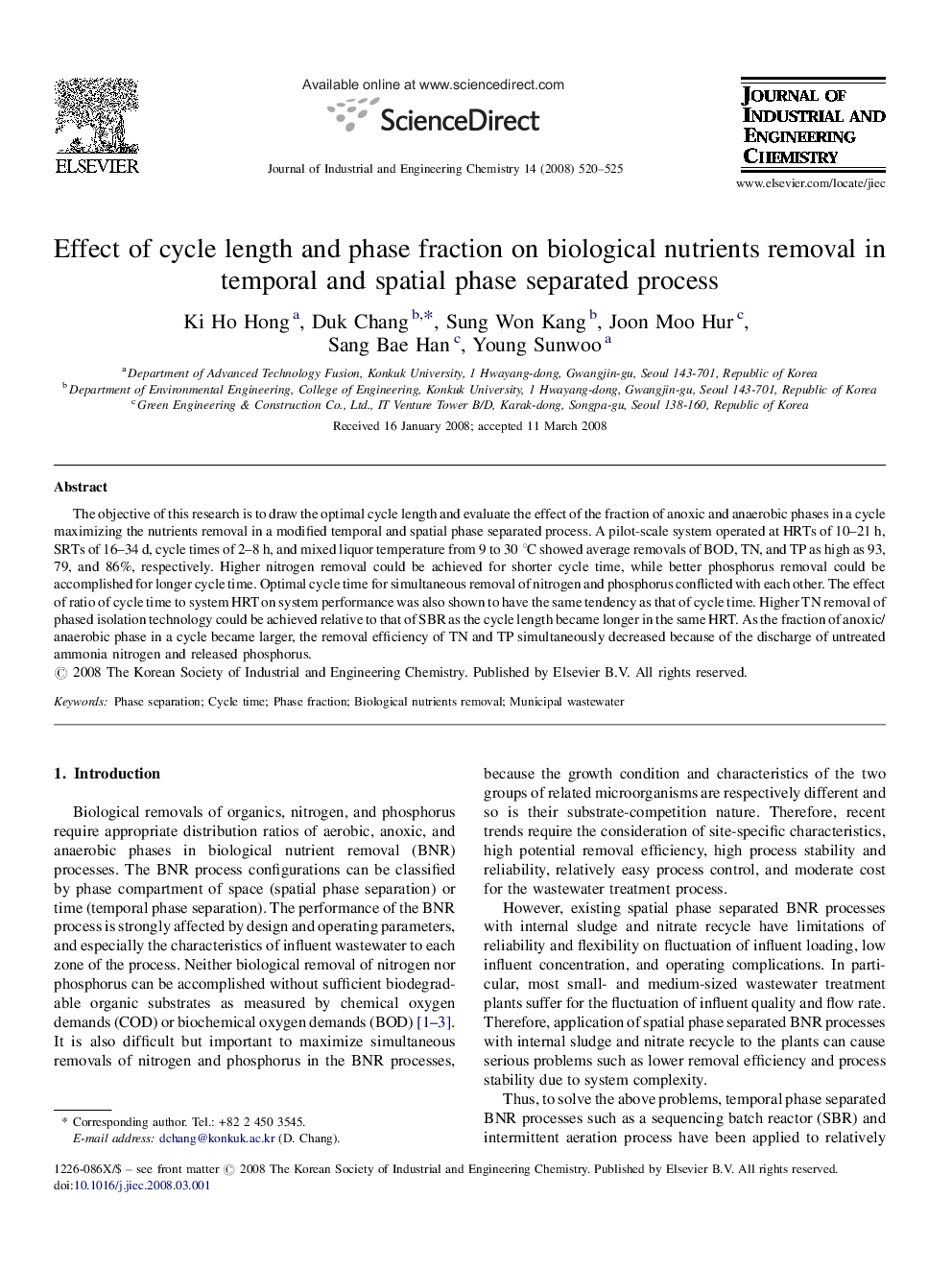| Article ID | Journal | Published Year | Pages | File Type |
|---|---|---|---|---|
| 228858 | Journal of Industrial and Engineering Chemistry | 2008 | 6 Pages |
The objective of this research is to draw the optimal cycle length and evaluate the effect of the fraction of anoxic and anaerobic phases in a cycle maximizing the nutrients removal in a modified temporal and spatial phase separated process. A pilot-scale system operated at HRTs of 10–21 h, SRTs of 16–34 d, cycle times of 2–8 h, and mixed liquor temperature from 9 to 30 °C showed average removals of BOD, TN, and TP as high as 93, 79, and 86%, respectively. Higher nitrogen removal could be achieved for shorter cycle time, while better phosphorus removal could be accomplished for longer cycle time. Optimal cycle time for simultaneous removal of nitrogen and phosphorus conflicted with each other. The effect of ratio of cycle time to system HRT on system performance was also shown to have the same tendency as that of cycle time. Higher TN removal of phased isolation technology could be achieved relative to that of SBR as the cycle length became longer in the same HRT. As the fraction of anoxic/anaerobic phase in a cycle became larger, the removal efficiency of TN and TP simultaneously decreased because of the discharge of untreated ammonia nitrogen and released phosphorus.
